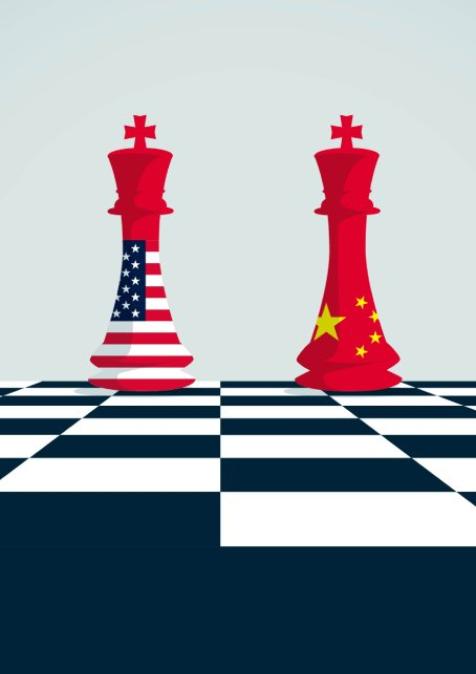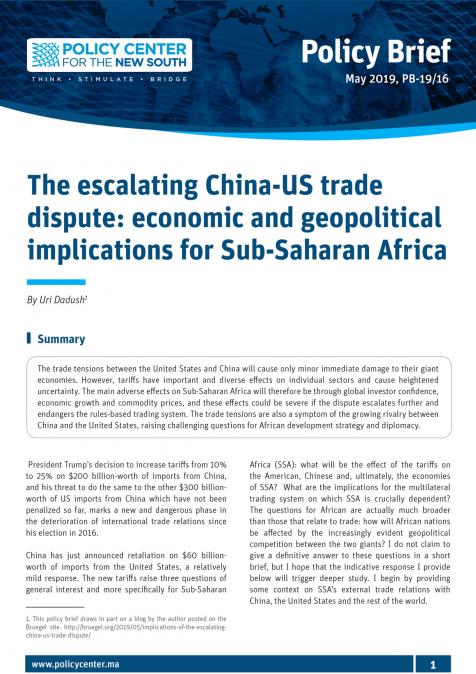Publications /
Opinion
Marcus Vinicius De Freitas
Professor, China Foreign Affairs University
Senior Fellow, Policy Center for the New South
The Chinese government’s white paper, ‘China’s Position on Some Issues Concerning China-US Economic and Trade Relations,[1]’ issued on April 9, 2025, in response to the escalating tariffs imposed by President Donald Trump, is not just a diplomatic response to the escalating tensions with the United States. It is a meticulously crafted strategic document that provides a clear roadmap of how Beijing intends to navigate the complexities of contemporary economic geopolitics.
The figures underpinning the China-U.S. relationship are both impressive and revealing. In 2024, trade between the two nations reached a historic $688.28 billion—an extraordinary 275-fold increase compared to 1979, when diplomatic relations were normalized. Notably, U.S. exports to China have surged by 648.4% since Beijing acceded to the World Trade Organization in 2001, surpassing by more than threefold the growth of U.S. exports to the rest of the world during the same period. Currently, the U.S. is the primary destination for Chinese exports, and the second-largest source of its imports. Conversely, China ranks as the third-largest destination for U.S. exports and is the second-largest origin of its imports.
Profound financial ties further reinforce this interconnection: according to the U.S. Department of the Treasury, as of December 2024, China held $759 billion in U.S. Treasury securities, solidifying its position as the second-largest foreign creditor to the United States.
The issuance of the white paper comes at a delicate time: tariffs have skyrocketed on both sides from both sides have surpassed 100%, the political climate in the U.S. is marked by inflammatory rhetoric, and the multilateral trading system is weakened. In this context, China seeks to reposition itself as an economic powerhouse and a pillar of institutional stability, contrasting starkly with the U.S. approach, which is characterized by unilateralism and confrontation.
Three central aspects of the white paper warrant attention.
First, there is the declared commitment to multilateralism and the international economic order based on rules. China reaffirms its support for the WTO and condemns the systematic use of protectionist measures by the U.S. It criticizes the abandonment of cooperation and the replacement of dialogue with unilateral sanctions. Doing so is a rational alternative to an increasingly erratic American leadership.
Second, the white paper emphasizes that cooperation is the pathway to mutual benefit. China asserts that the trade conflict harms both parties, and the wider world. It reiterates that imbalances should be addressed through dialogue and recognition of interdependence, instilling a sense of hope and optimism about the potential for positive outcomes.
Thirdly, the white paper unequivocally rejects the politicization of trade and the arbitrary invocation of national security as an economic pretext. It denounces U.S. restrictions on exports and U.S. attacks on Chinese companies as practices that undermine the multilateral system and encourage its fragmentation. This strong stance reassures the audience about China’s unwavering commitment to fair-trade practices.
Beneath this diplomatic language lies a clear geopolitical message: China does not seek to submit to, or break away, from the global system. It aims to reform it based on legal principles while adapting it to the new reality of global power. With its network of trading partners—over 140 countries and regions[2] , including key players in the Global South—and its predictable stance, Beijing bets on strategic rationality as a form of influence.
By releasing the white paper, China has sent a calculated signal: it prefers stability over chaos, dialogue over tariffs, and cooperation over confrontation. In an international scenario marked by unpredictability, this positioning is a form of leadership—and an opportunity for those who can interpret it with pragmatism and strategic vision.
Trump bets on chaos and expects subservience from the international community, which is humiliated by such a situation. By adopting the stance of a victim of the global trade system, Trump conceals how much the United States has benefited from an international order that the U.S. constructed and from which the U.S. has profited. Unfortunately, from a zero-sum perspective, one party’s loss must exactly balance one party’s gain, meaning no country can ascend economically. This is a significant mistake.
[1] See http://english.scio.gov.cn/whitepapers/2025-04/09/content_117814362.html. Accessed on 4/10/2025.
[2] See https://english.news.cn/20240726/b32d46649ffe479693fc4ef855b02ecd/c.html?utm_source=chatgpt.com. Accessed on 4/10/2025.





